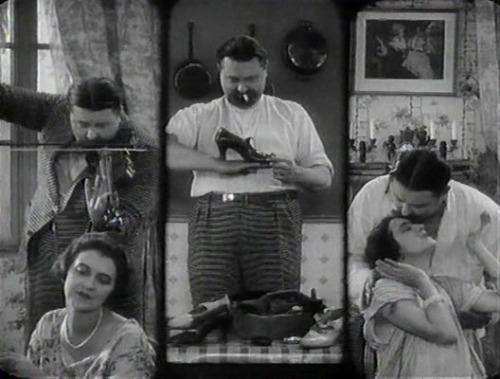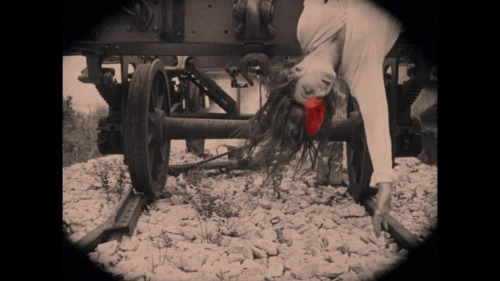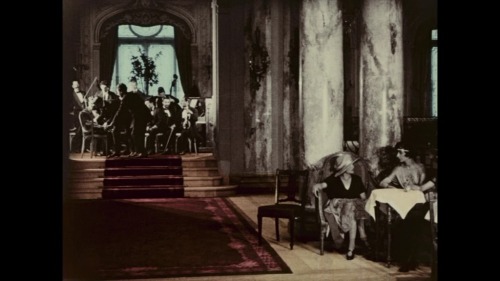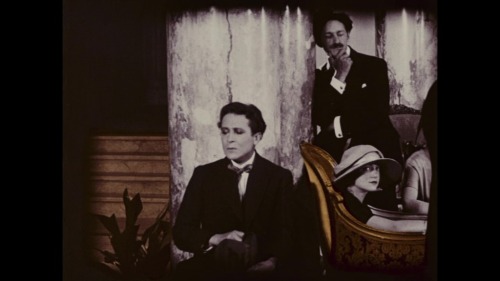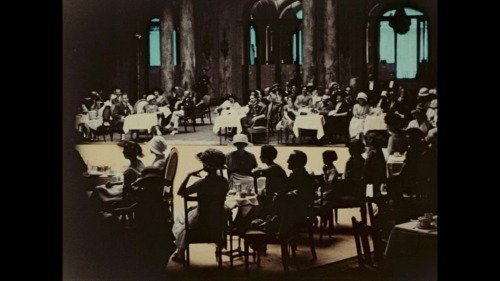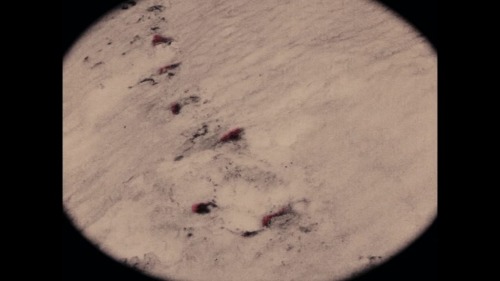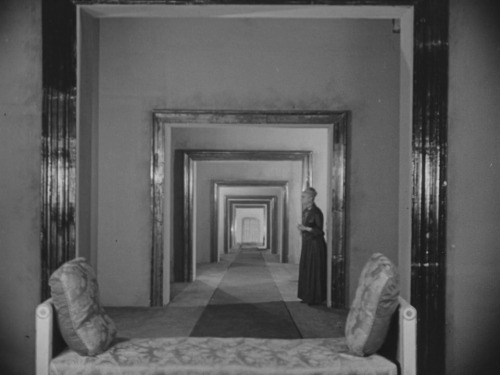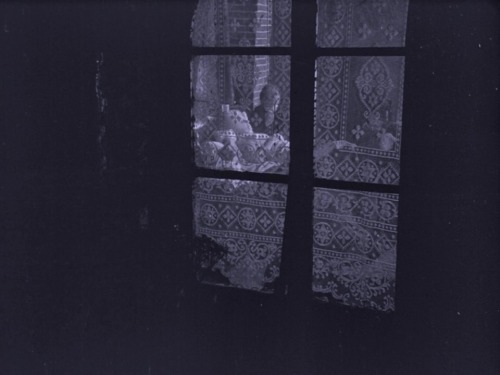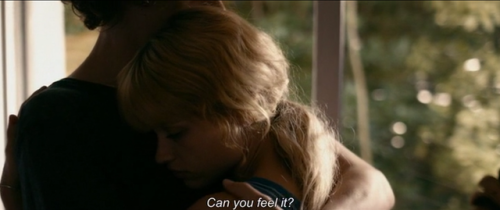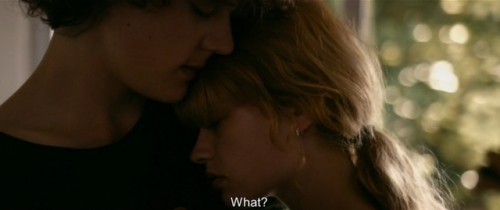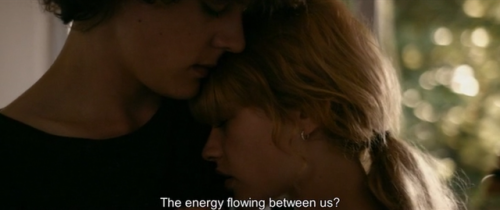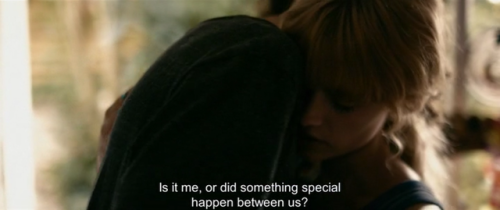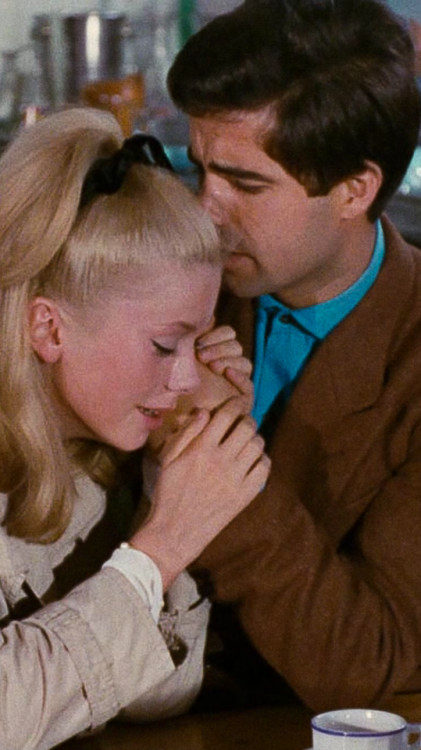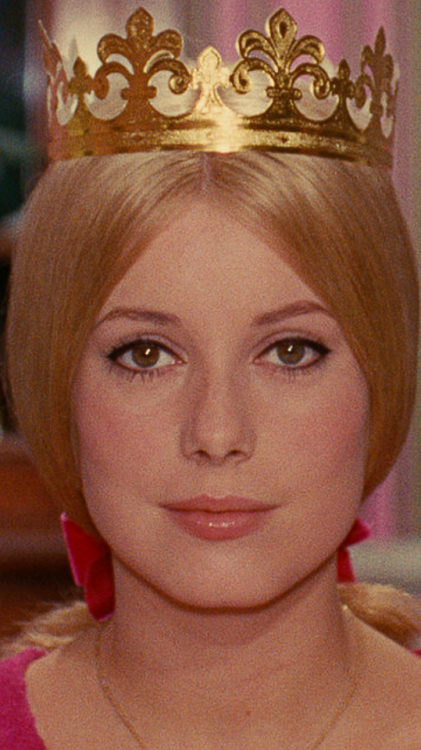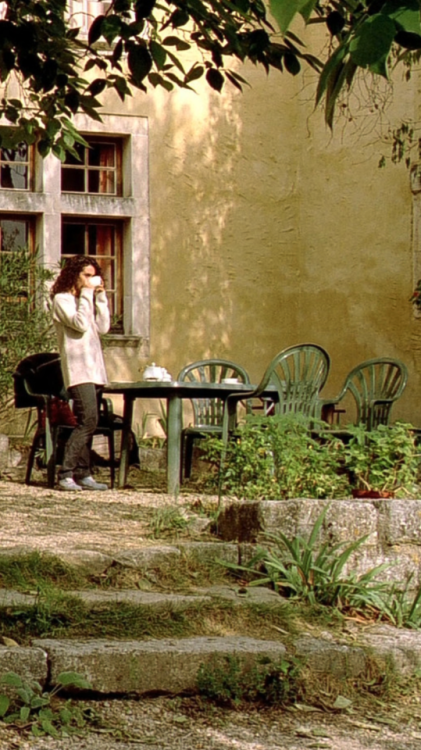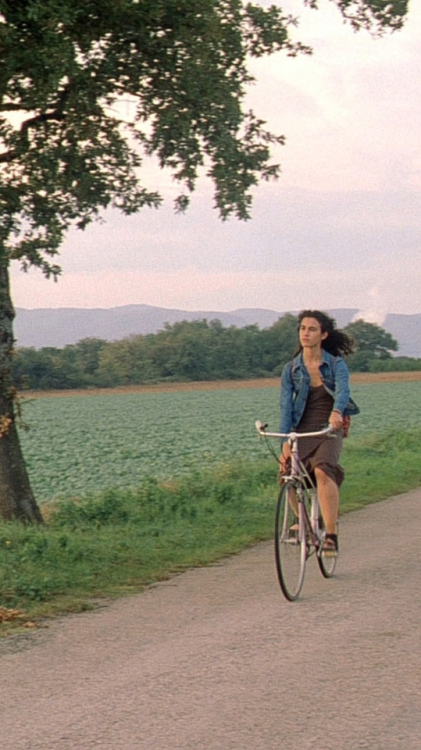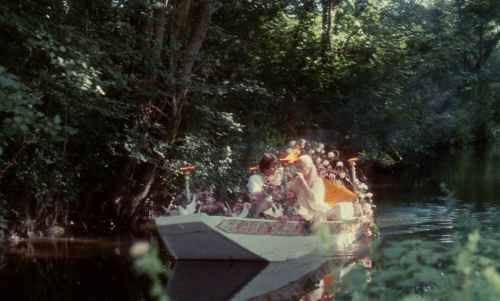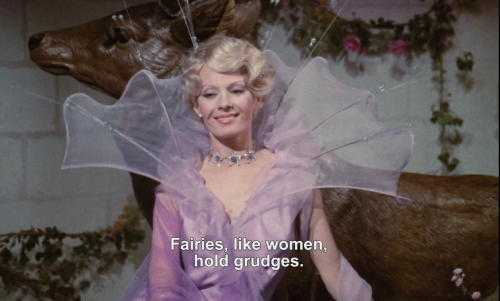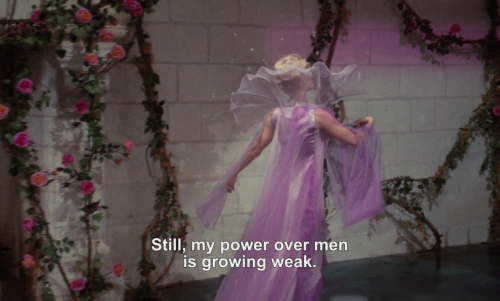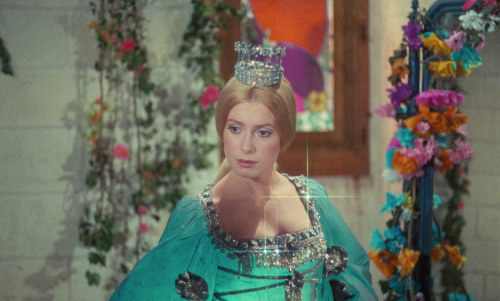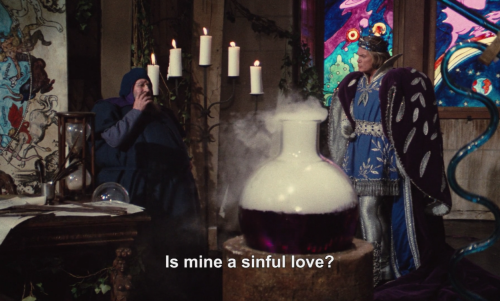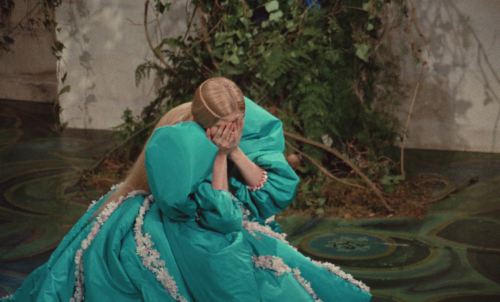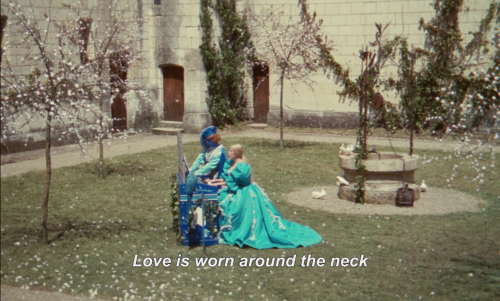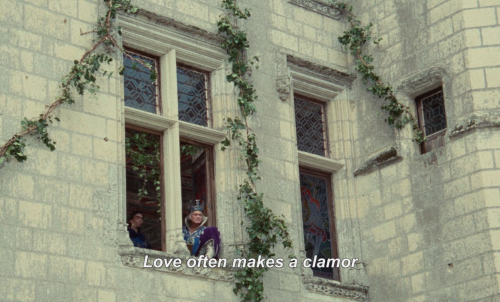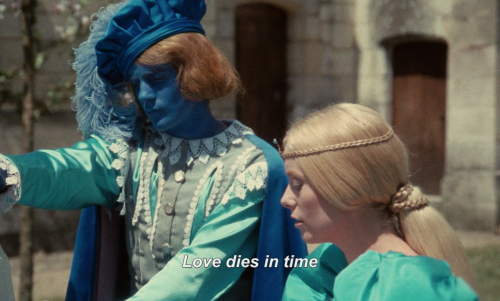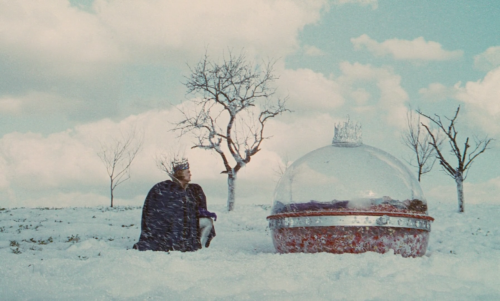#french film
Love and Bruises (2011) Official Trailer







Catherine Deneuve | Belle De Jour (1967)
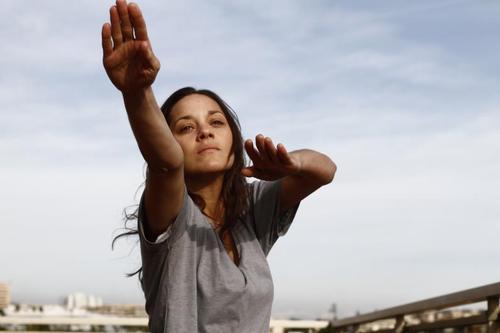
Three years after the release of riveting prison thriller, ‘A Prophet’, director Jacques Audiard and screenwriter Thomas Bidegain team up again for 'Rust and Bone’. A brutal and stunning love story starring Marion Cotiillard and Matthias Schoenaerts, it follows a bear knuckle fighter and whale trainer who are brought together following a devastating accident. I spoke to Jacques and Thomas about the making of one of the year’s most beautiful and unforgettable films.
HOW WOULD YOU CHARACTERISE RUST AND BONE?
Jacques Audiard: It’s a melodrama. We call it melotrash.
Thomas Bidegain: It’s a love story, yes.
IT WAS BASED ON A SHORT STORY BY CRAIG DAVIDSON, BUT THE MAIN CHARACTERS ARE NOT IN THE SHORT STORY, SO WHAT INFORMED THE CHARACTERS?
TB: It was based on several short stories, mixed together. There was no love story in the short story, and in the short story there was a man who worked in Sea World and lost a leg.
JA: The woman loses two!
TB: The minute we thought it was a woman we made a decision to have her lose both her legs, because then it will become something of an erotic proposition. So the character Stephanie doesn’t really exist in the short stories, and the character of the man was in the short story about the boxing guy. And we wanted boxing to be an objective for him, and not the beginning. At the beginning he doesn’t know he can fight.
The love story doesn’t exist, but the universe as it is described in the short stories is definitely what is still there, and is what attracted us to the story, the universe of crisis and economic catastrophe.
WHAT WAS IT ABOUT THE SHORT STORY THAT COMPELLED YOU?
JA: Craig Davidson’s short stories were a complete universe - the kids,the fights, the atmosphere of devastation and crisis. We were just coming out of A Prophet, a movie of jail and men, no light, no space,no women, no love. Here I wanted to go into the opposite direction with a strong female character. We really imposed a love story onCraig’s stories.

WAS THERE ANYTHING YOU CHANGED TO MAKE IT MORE UNPREDICTABLE? WERE THERE OTHER VERSIONS, PERHAPS?
TB: No, the ending was always like this. We wanted the film to be unpredictable, and it is, because it’s character-driven. Each character took us on a journey, and so we saw it as an adventure film, as a ride. You just get on and go with the characters - actually, as we were writing, the characters were taking us through the story. It was difficult to write scene 54 without having written scene 53, because we were never quite sure what the characters would do in the scene - would they make love, would they talk? It was a game between those characters and us writers.
JA: Sometimes we thought we would tell the story of the characters fromthe same level. But the characters are not equal, and the main character is him. He’s the one that brings us into the story. Becauseof Stephanie and the accident, you tend to think it’s her characterthat would lead the story, but that was wrong.
TB: I would like to stress the importance of the kid, as we thought of himas an invisible narrator. At the beginning his eyes are closed, and he wakes up at the end. We know the film would produce very strongimages: woman with no legs, fights, images from fairy tales. Images a kid would see, monsters in reality seen through the eyes of a lostkid.
WHAT WAS IT ABOUT MATTHIAS THAT STOOD OUT FOR THE PART OF ALI?
JA: The part we wrote was tougher than it is on screen now. It was a closed character, more like an animal. Very rapidly we thought the character was not seductive enough, and the question was how a girl would fall in love with someone like him. So the job with Matthias was to make the character more juvenile, somehow. He had a lot of charm this way, but it also changed the position he had with his son. In the original scenario he was a violent father, and then with the juvenile thing he became a big brother, clumsy but loving. It really changed a lot of things in the film - in the end he discovers he really is a father, and he had ignored that.
ALI DOES SOME VERY UNLIKEABLE THINGS IN THE FILM - HOW DID YOU MAKE IT SO AN AUDIENCE COULD EMPATHISE WITH HIM?
JA: Hitchcock used to say, “The better the villain and how violent he is,the better the film.” The better the bad guy, the better the film. If you start with an obvious thing, that the characters are great, itwill be different to move from that. If you want a hero, he willchange at the end. He evolves in the last minute, where Stephanie is evolving all the time, going from arrogant princess to disabled lady.
So it was difficult for Ali to be written because he just evolves at the end. He’s not a nice guy - he’s rough, he’s tough, and he doesn’t have the words and language.
THERE’S A REAL HARDNESS TO MARION’S CHARACTER, ESPECIALLY TOWARDS THE END.
JA: A feminine character would look at men fighting and may like it. It is quite shocking and it would shock me. For me, what Stephanie sees when she sees the fight is the braveness, the courage. She knows what courage is, as she is courageous, and she recognises that in Ali’s fighting.
JACQUES, WHAT INTERESTS YOU ABOUT THE CRIMINAL UNDERWORLD?
JA: Because I’m bourgeois [laughs]. Making films is always going towards something you don’t know. So it could be a geographical territory, it could be a relationship between two people, it could be psychological - it’s always something you don’t know. Cinema, it’s really the way I use it. I use it to look at somewhere that’s a bit different. So I learn a lot of things, and I make a film about that. That’s what I like to see as a viewer - a film that doesn’t teach me anything leaves me cold.
HOW HAS THE RELATIONSHIP BETWEEN YOU CHANGED, AND DOES IT AFFECT HOW YOU WRITE?
JA: We stimulate each other. It’s difficult to talk about it, as it’s been a while now.
TB: It took us a long time to write A Prophet, three years, and almost twoyears on this one. We work during shooting - I watch the dailies and we talk about them every day, and I keep on writing during shooting.The film keeps writing itself during the whole process. The important thing is not to let things go that you don’t like. To detect it, toknow what’s not good and to be able to say it.
JA: A collaboration like ours, there’s no ego at all. When my idea isbetter we use it, when his is better we use his. When we don’t have good ideas we get frustrated and go to sleep angry!
IT SEEMS THERE’S A LOT THAT COMES OUT OF PRE-PRODUCTION AND PRODUCTION - WHAT DO YOU FIND MOST EXCITING?
TB: To let everything that happens enter the film. Not to close it, tokeep the ball rolling all the time, even during the mix. That’s a rare quality for a director.
JA: Cinema cannot be narcissistic, or egotistic. The difference betweencinema and literature for instance, is that literature is a solitary practice. Cinema is collective gestures. When we write, two peopletogether is normal. On set, I can do the light, and can frame the film, but it’s a collection of all the talents. At the end, the ideayou had yourself is better, as all the talent adds to each other. Isn’t that beautiful? [laughs] People who make films to impose theirego, I don’t understand.

SO YOU REJECT AUTERISM?
JA: No, because I am an auteur. When you use cinema, you’re an auteur, butother elements have been added to it, and it’s probably better than the idea I had myself.
CAN YOU TALK ABOUT YOUR VISUAL EFFECTS TEAM ON THE FILM?
JA: I worked with wonderful people, Cedric Fayolle and Mikros Image. Itwas very easy to use, and I didn’t lose time at all. With any actress, you could cut off her legs and it would be a work accident, withMarion Cotillard, it’s an industrial catastrophe. It’s different. So the special effect is Marion Cotillard.
DO YOU HAVE A PARTICULAR FAVOURITE SCENE IN THE FILM?
JA: The pleasure we have in the scene is to write and direct it. When he says, 'Do you want to have sex?’ And she’s under him, talking. I really like all that – the actors had wings at that moment.
CAN YOU TALK ABOUT THE USE OF KATY PERRY’S ‘FIREWORK’?
JA: [laughs] It’s the actual music that they use at Sea World. The whaleshave to listen to it four times a day!
TB: Four times a day. Poor animals.
WHAT DO YOU THINK OF THE STATE OF FILM-MAKING IN FRANCE?
JA: I don’t know if I’m qualified! I still really love cinema, but something has changed and I do not agree with it. There’s no relationship between cinema and reality, and that one at point it was helping us understand the world, but now most of the time cinema is telling us stories about cinema but not about reality. The relationship between cinema and reality is more and more distant. But the films I like today come from Iran, from Korea, from China. They tell me something I don’t know and inform me about the state of the world.
RUST AND BONE
Interview: Emma Hurwitz
Images courtesy of Studio Canal

Tasked with providing the costumes for one of the most bizarre and eccentric pieces of cinema we have ever seen - Anaïs Romand has contributed to the unique and fantastical splendour of Leos Carax’s ‘Holy Motors’. Following the mysterious, Monsieur Oscar on a limousine odyssey across Paris as he transforms from businessman-to-beggar woman-to-dying man…and everything else in between. The costume played as big a role as any in constructing the multiple characters that actor, Denis Lavant had to encompass. Anaïs talks me through the thought process behind such an exceptional project.
HOW DID YOU BECOME INVOLVED WITH HOLY MOTORS?
Albert Prévost a producer and close friend to Leos introduced me to him. Albert died of cancer just one month before Cannes, he had seen the film almost ready and was very proud of it. I had worked with Albert before and knew that working with little money didn’t mean little artistic ambition, and because we trusted each other we could always find some solutions and give Leos what he wanted.
WHAT WERE YOUR INITIAL THOUGHTS WHEN YOU READ THE SCRIPT?
It was fascinating to follow this actor through all his disguises, and many images were coming as I was reading, my first thoughts were that it was going to be a real challenge to make all the characters performed by Denis Lavant and knowing Leos Carax is such a perfectionist!
HOW DID YOUR IDEAS DEVELOP?
Talking a lot with Leos, because the script was very factual I had to understand the atmosphere and intention in each scene so it was a slow construction.

HOW MUCH OF A COLLABORATIVE PROCESS WAS IT?
All the crew prepared the film in the same place in Paris, Leos was there all day, every day, except when he had to go on locations. We could all communicate with Leos any time, meet and talk about the image, the cast, the locations, and the costumes. This film was prepared - and shot - with a very good spirit, we have always tried to find the solutions in a very collaborative process. Leos was present at all the fittings, looking at every detail, developing his ideas during the fittings.
WHY DO YOU THINK COSTUME IS AN IMPORTANT PART OF FILM, AND HOLY MOTORS IN PARTICULAR?
Well I think costume is always an important part of film, maybe on Holy Motors as there is no “story”, the visual part tells a lot and is as important as the text, the sound, the rhythm, so everything that was filmed had to fit precisely in the picture. But this is the language of cinema isn’t it?
THE COSTUMES OF OSCAR CHANGE THROUGHOUT - WHICH OF HIS CHARACTERS WAS THE MOST FUN TO WORK ON?
The business man, usually to dress an actor as a business man isn’t so much fun, but with Denis Lavant it was an incredible transformation; he is very thin, I made a false body to make him look heavier, the fittings were fun. But all the characters were fun to make.

HOW LONG DID IT TAKE YOU FROM DESIGNING TO THE FINISHED PRODUCT?
3 months.
WHEN DID YOU REALISE THAT YOU WANTED TO BECOME A COSTUME DESIGNER OVER ANYTHING ELSE?
After watching a few movies…now I’m addicted.
HOW HAS YOUR SKILL DEVELOPED OVER YOUR CAREER?
Always being curious.

WHAT DO YOU CONSIDER YOUR GREATEST ACHIEVEMENT?
I don’t think I’ve achieved anything, I’m looking ahead and dreaming of the costumes of the next films.
WHAT ARE YOU WORKING ON NEXT?
A film directed by Bertrand Bonello, whom I had work with for l'Apollonide (House of Tolerance) about Yves Saint Laurent.
WHO IS YOUR IDOL?
For costume design: Piero Tosi

Holy Motors
Interview: Emma Hurwitz
Images courtesy of Artificial Eye


betty blue (1986) dir. jean-jacques beineix

